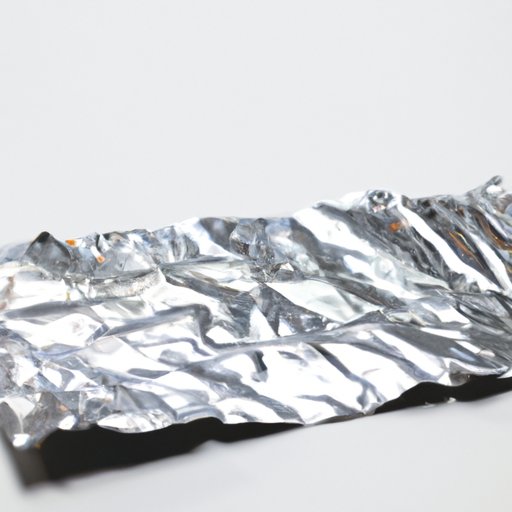Introduction
Aluminum foil is one of the most popular products used in modern kitchens. It’s often used for covering dishes, wrapping food, and for baking. But did you know that aluminum foil is also recyclable? In this article, we’ll explore the recyclability of aluminum foil and the benefits of recycling it.
Exploring the Recyclability of Aluminum Foil
When it comes to recycling aluminum foil, there are a few things to consider. First, aluminum foil needs to be separated from other materials such as plastic wrap or paper before it can be recycled. Additionally, aluminum foil needs to be clean and free of food residue before it can be recycled.
Once aluminum foil has been separated and cleaned, it can be recycled. The process of recycling aluminum foil is similar to that of other metals. The aluminum foil is collected and broken down into small pieces. These pieces are then melted down and formed into new aluminum products.

What You Need to Know About Recycling Aluminum Foil
When it comes to recycling aluminum foil, not all types of foil can be recycled. For example, foil made with a non-aluminum material, such as polyester, cannot be recycled. Additionally, foil that has been contaminated with chemicals or paint cannot be recycled.
It’s important to know where to recycle aluminum foil. Many local recycling centers accept aluminum foil, but it’s best to check with your local center to see what their policy is. Additionally, some cities have curbside pickup programs that accept aluminum foil.
The Benefits of Recycling Aluminum Foil
Recycling aluminum foil has both environmental and economic benefits. When aluminum foil is recycled, it reduces the amount of energy needed to make new aluminum products. This, in turn, reduces greenhouse gas emissions and helps to protect the environment.
Additionally, recycling aluminum foil reduces the amount of waste sent to landfills, which helps to conserve natural resources. On an economic level, recycling aluminum foil helps to create jobs in the recycling industry, as well as reduce the cost of producing new aluminum products.

How to Properly Dispose of Your Aluminum Foil
If aluminum foil cannot be recycled, it should be disposed of properly. One way to do this is by separating aluminum foil from other materials, such as plastic wrap or paper, before disposing of it. Additionally, aluminum foil should be cleaned before disposal to avoid contamination of other materials.
When disposing of aluminum foil, it should be placed in a designated container, such as a trash can, that is clearly labeled “aluminum foil.” This will help ensure that it is properly disposed of and not mistaken for another material.

Tips for Maximizing Aluminum Foil Recycling
There are several strategies for reducing aluminum foil waste and maximizing aluminum foil recycling. First, try to buy only what you need. Avoid buying large quantities of aluminum foil if you don’t plan on using it all. Additionally, try to reuse aluminum foil when possible. For example, you can use it to cover dishes or wrap up leftovers for later.
Finally, if you do have excess aluminum foil, consider donating it to a local charity or organization. Many organizations accept donations of aluminum foil, which can then be recycled or reused.
Conclusion
In conclusion, aluminum foil is a recyclable material that offers both environmental and economic benefits. When recycling aluminum foil, it’s important to separate it from other materials and clean it before disposal. Additionally, there are several strategies for reducing aluminum foil waste and maximizing aluminum foil recycling.
By understanding the recyclability of aluminum foil and taking steps to properly dispose of it, you can help to reduce waste and protect the environment.

